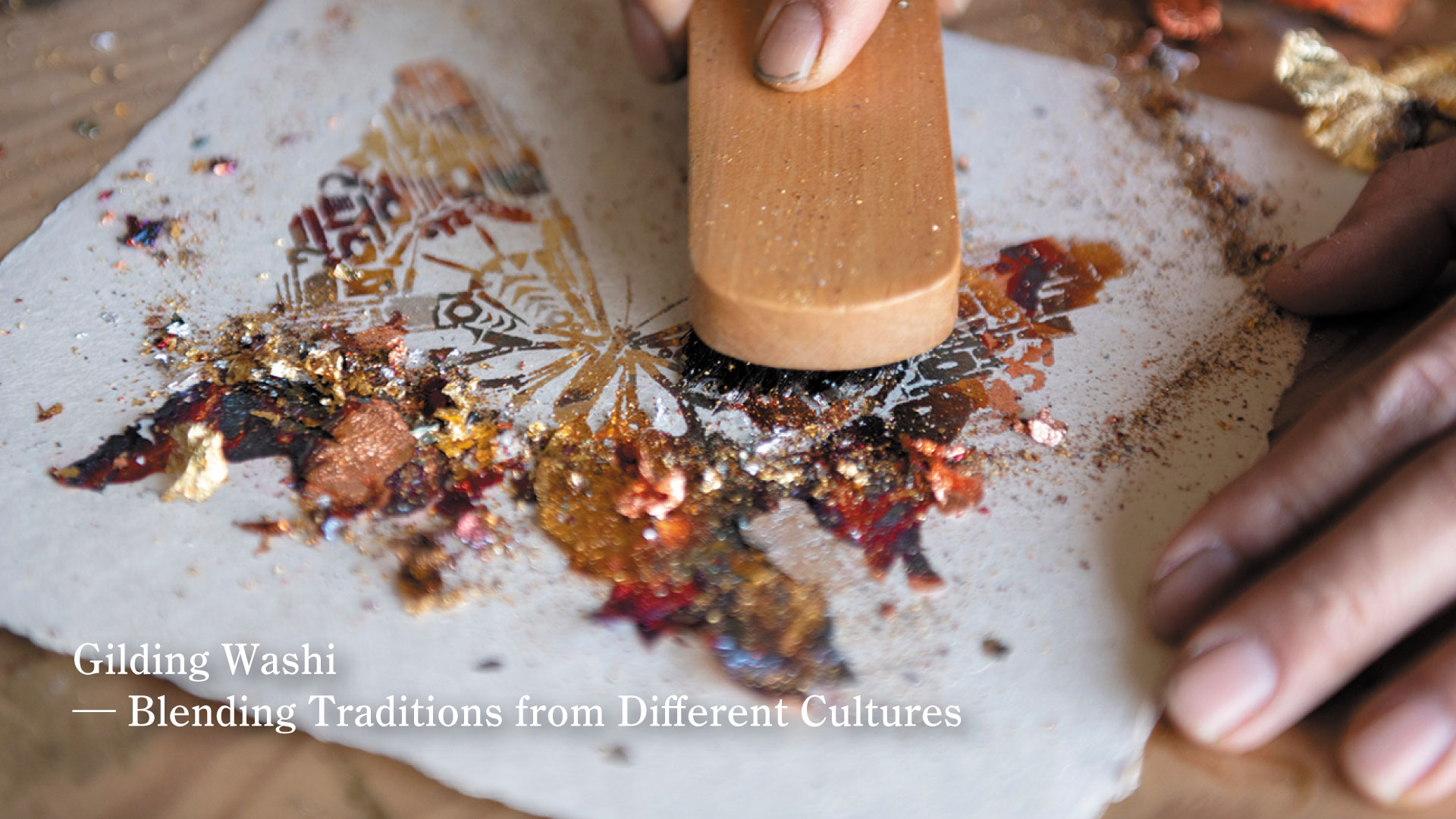
Handmade paper in a simple modern Japanese design is scattered with colorful metal leaf for an exquisitely nuanced shimmer. Gilding Washi brings the French decorative technique of gilding to handmade Ozu Washi, traditional washi Japanese paper produced in Uchiko in Ehime Prefecture. This is an unprecedented fusion of Japanese and Western styles of paper whose praises have been sung around the world. We take a closer look at its appeal with Hiroyuki Saito of Ikazaki Shachu Inc., who has established the entirely new genre of Gilding Washi and continues to breathe new life into the handmade washi industry.
Ikazaki Shachu Inc.
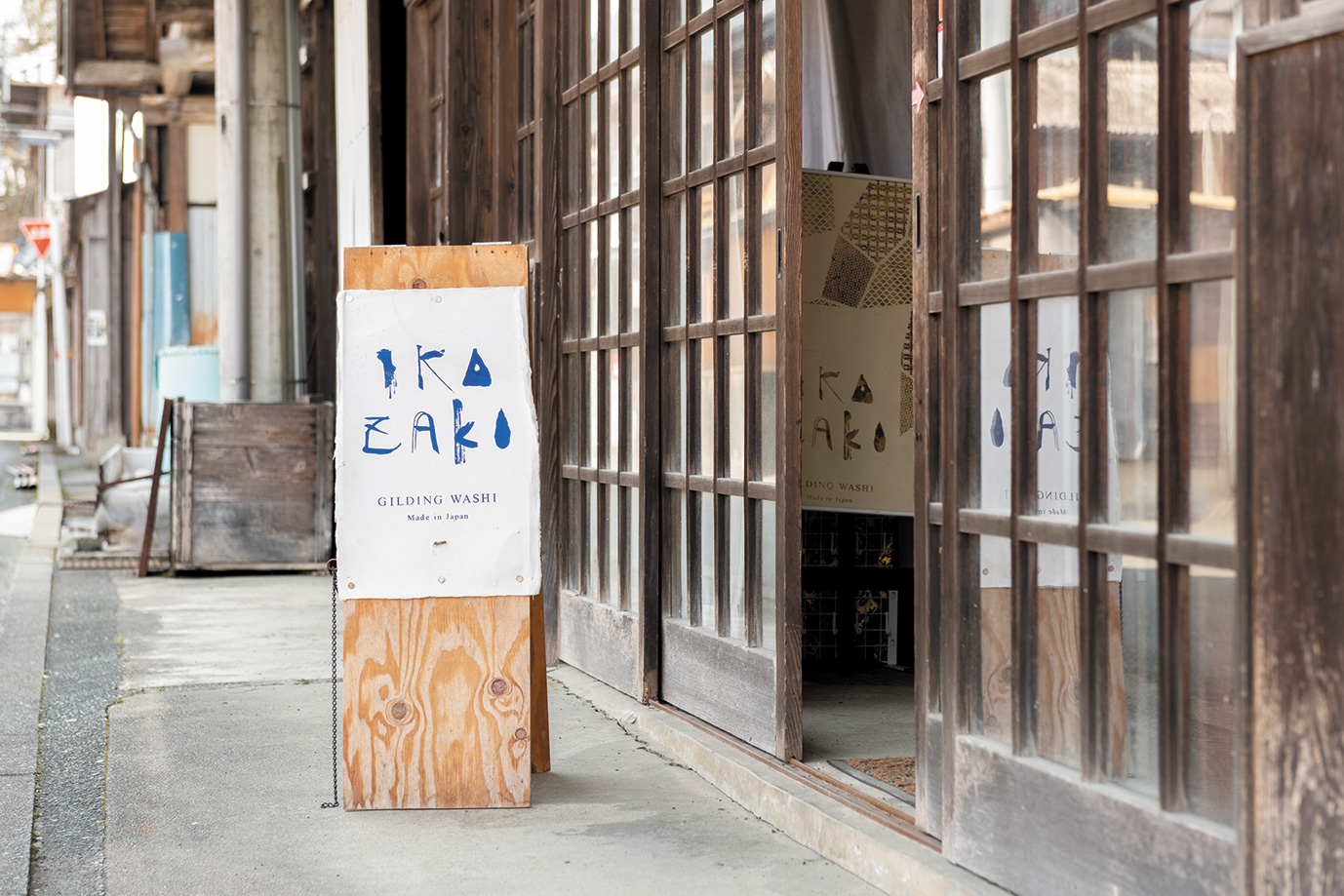
Address: 1620-3 Ikazaki Kabuto, Uchiko-cho, Kita-gun, Ehime Prefecture
Tel: +81-893-44-4403
Shop & Showroom (in Tenjin Sanshi Factory)
Address: 1240-1 Hiraoka Kabuto, Uchiko-cho, Kita-gun, Ehime Prefecture
Tel: +81-893-44-4403
Scan the QR codes for details.
Located about 40 km south of Matsuyama City in central Ehime Prefecture, Uchiko is immersed in the scenic beauty of the surrounding mountains. The Oda river flows through the town, providing the pure, clean water needed to make Ozu Washi, which has been designated a national traditional craft due to its exceptional papermaking techniques and excellent quality. Ozu Washi boasts an incredibly long history, mentioned as far back as around the 8th century, in the Shosoin Documents. This paper was distributed far and wide as premium quality washi for calligraphy and shoji sliding doors, and papermaking developed into a major industry in the Ozu-han feudal domain during the Edo period (1603–1868).
With increased production of Western style paper, advanced mechanization, and lifestyle changes, the washi industry has declined. However, one person who continues to seek out promising new possibilities for washi is Hiroyuki Saito, president of Ikazaki Shachu Inc. Saito has developed his own unique technique, called Gilding Washi, which is breathing new life into the tradition of handmade Japanese paper.
Gilding is a traditional French technique using metal leaf. This technique, used to create designs that decorate frames, furniture, and other items, involves creating a total of five different color mixes by adding oxidized foil to a gold, silver, or copper base. Saito applied this metal leaf technique to handmade washi to craft Gilding Washi with ingenious shades of color. He explains, “All of our leaf is imported from France. The chemical reactions caused by oxidation changes their color to blue or pink, which allows for the expression of original colors.”
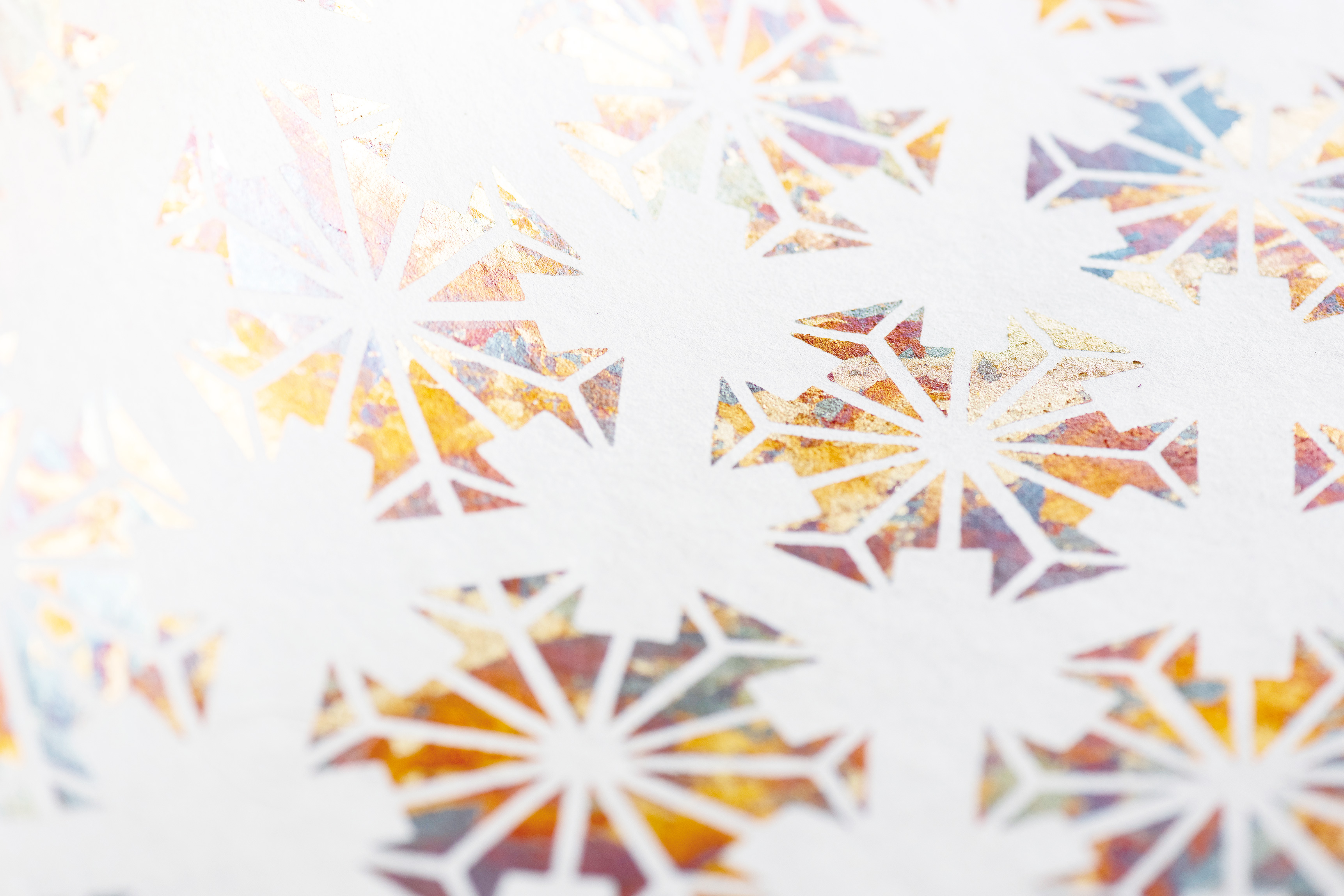
To produce Gilding Washi, Saito uses woodblock and silkscreen plates based on the more than 2,000 designs he stocks. Using a proprietary glue, he applies the metal leaf and presses it into the surface of the paper with a roller. He then brushes the paper, leaving the foil only where the glue has been applied to create complex and nuanced color and shimmer.
“The most difficult part of Gilding Washi is adjusting the glue. This is a water-based glue that we have developed ourselves, and it only becomes viscous when applied and allowed to dry. It stays viscous for a long time, so we can take the time to process even the most intricate designs. The viscosity of the adhesive changes depending on the temperature and humidity so we adjust for that by modifying the formulation of the glue,” Saito explains.
01
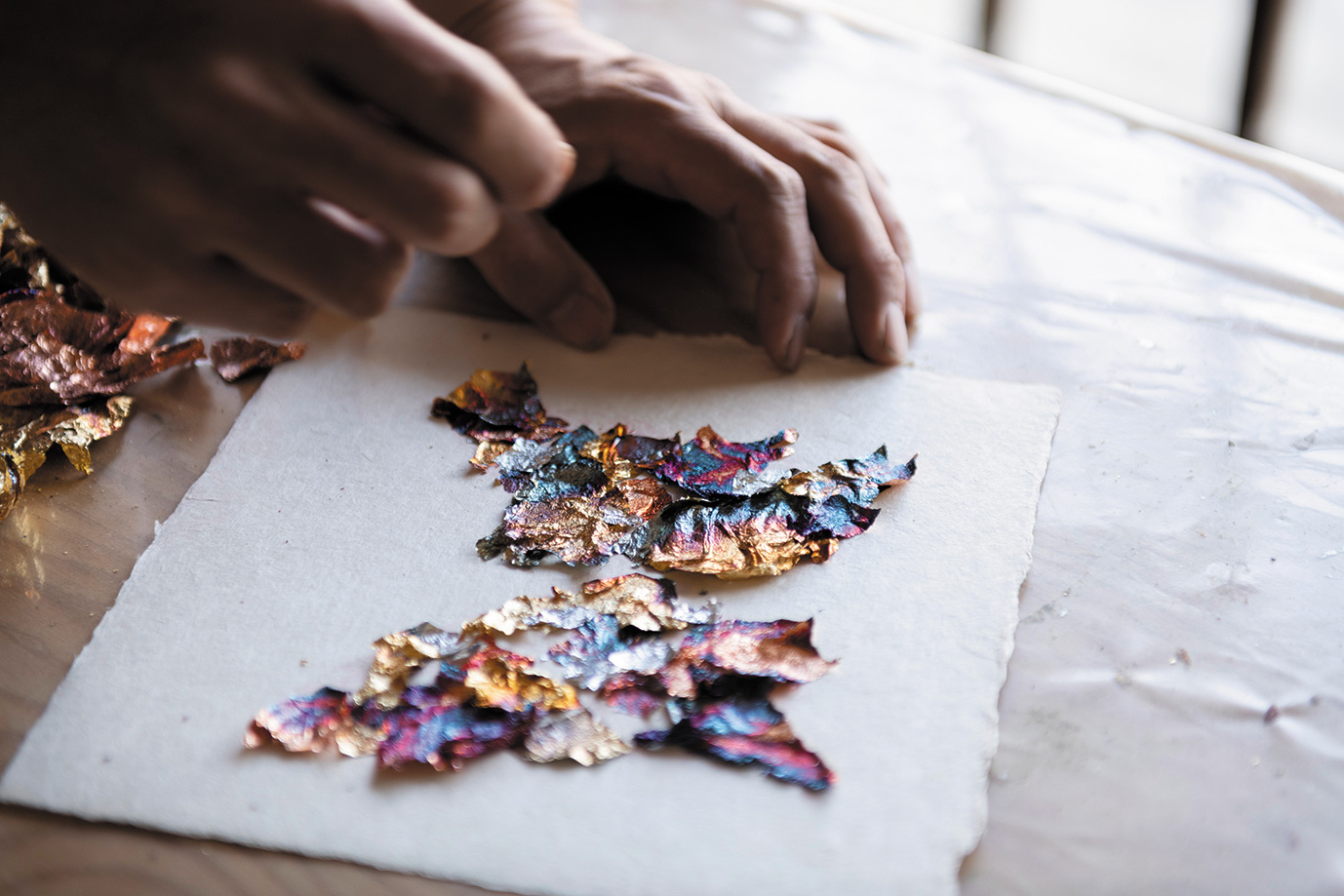
Colored metal leaf is placed on lines of glue in the outline of the design.
02
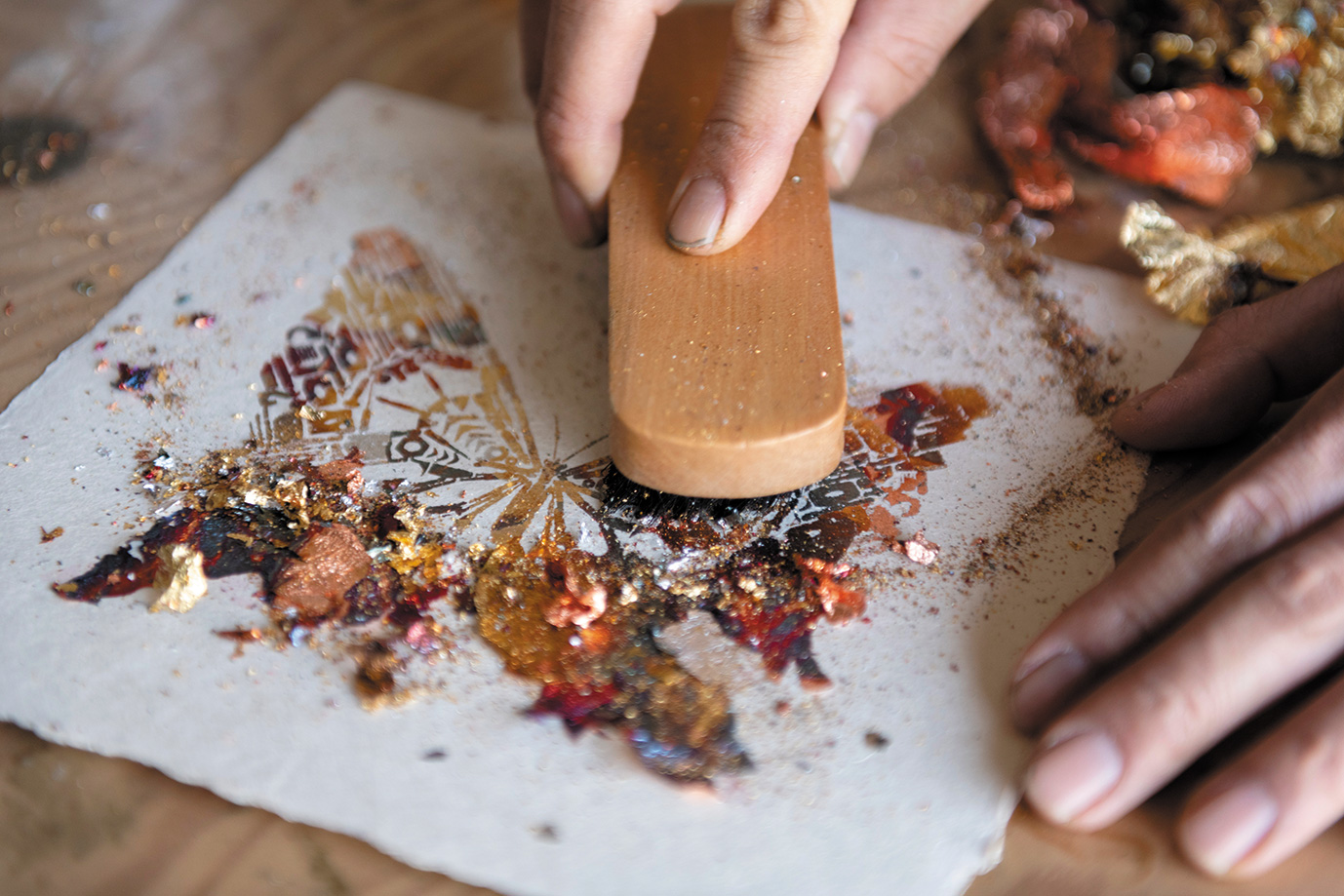
The leaf is brushed with a rubbing motion.
03
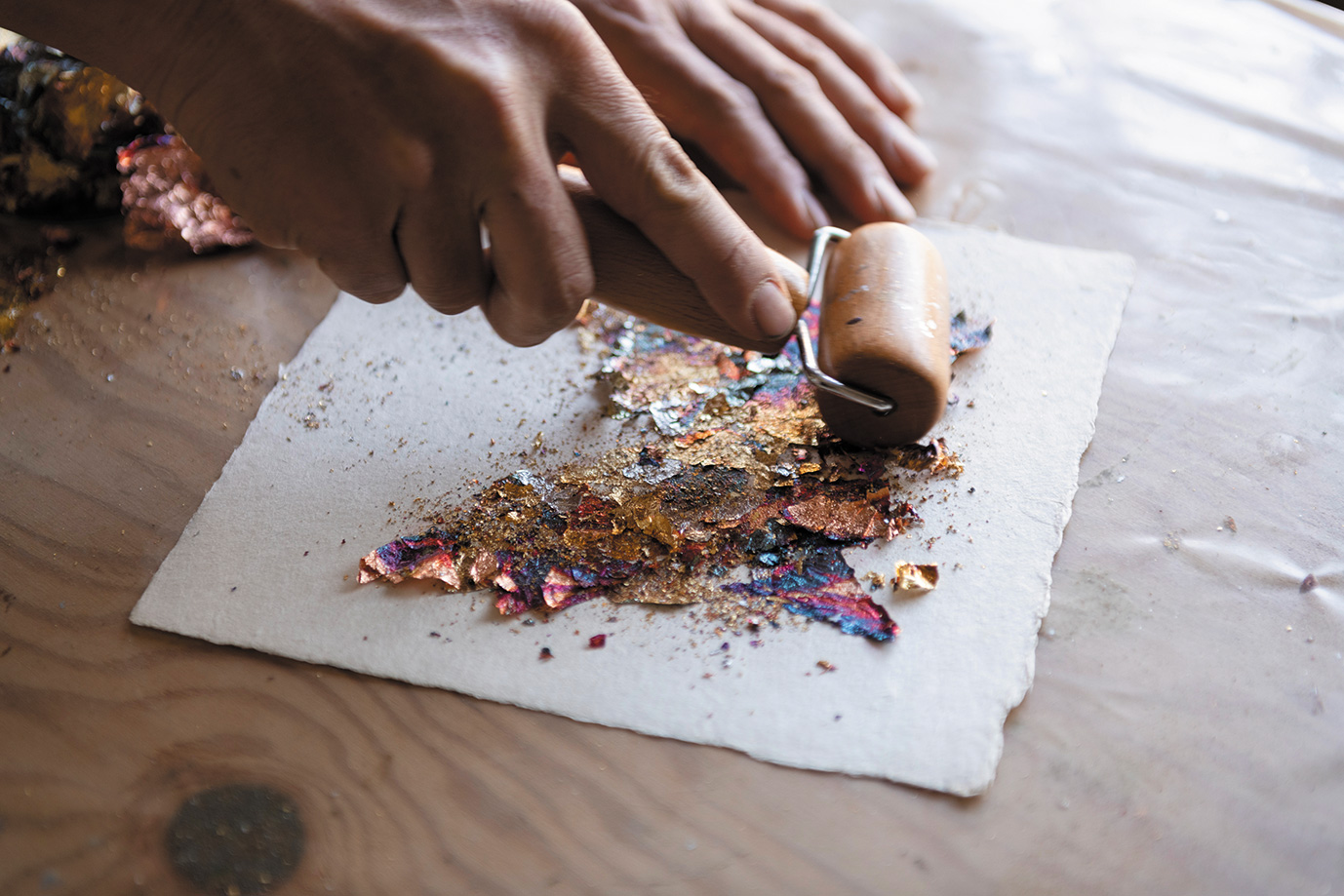
A roller is used to press the metal leaf into the washi.
04
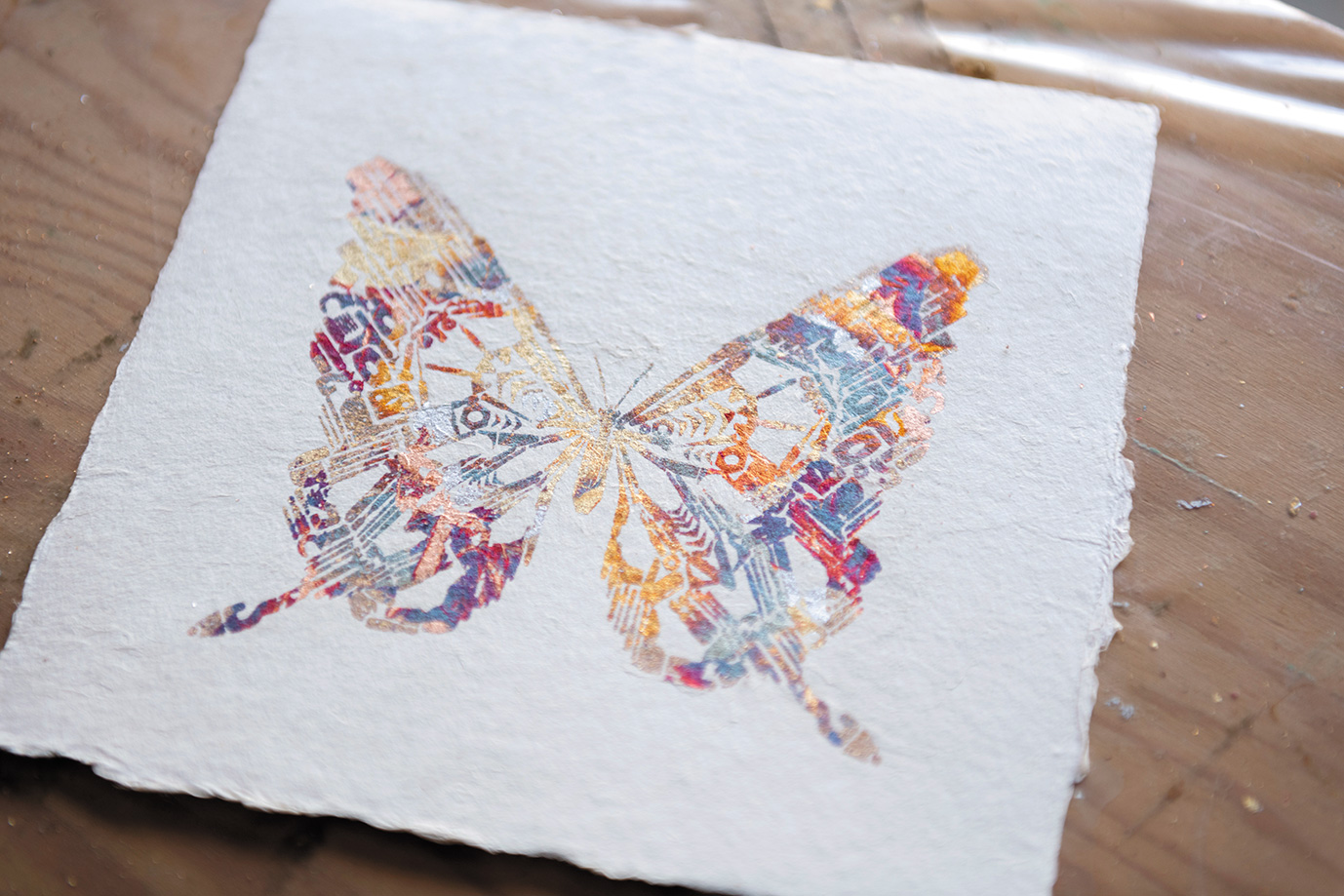
The leaf remains only on the glue below, revealing an intricate and beautiful design.
Saito’s first encounter with gilding was in 2008. Born and raised in Kanagawa, Saito graduated from university and worked in IT as a system engineer for a telecommunications company for ten years, followed by three years in planning and sales. Around that time, he began to think about starting his own business as the next stage in his career, and his father-in-law approached him for advice, which led him to embark on a new path.
“My wife’s father was a member of the Uchiko Chamber of Commerce at the time, and he was focused on revitalizing the washi industry. He asked me to go in his place to Dubai to check out an exhibition by a French designer named Gabor Ulveckzki. I went, thinking of it as a nice chance to travel, too, but I was stunned as soon as I saw Gabor’s gilding. I had a hunch that if we brought his techniques to washi, we could create something very interesting. Fortunately, Gabor was also curious about washi, so he moved to Uchiko with his family for about two years to help take on this new challenge,” he recalls.
Gabor Ulveckzki is a popular designer of wallpapers that feature the gilding technique. His work sells in Europe, North America, the Middle East, and Japan, and in 2007, he was certified an Entreprise du Patrimoine Vivant, establishing his status as a master craftsman. Saito left the IT company he was working for when the Ulveckzki family arrived in Japan. He founded Ikazaki Shachu Inc. and began learning gilding techniques from Ulveckzki, while at the same time training as a washi artisan at Tenjin Sanshi Factory, a local paper mill that has long operated in Uchiko.
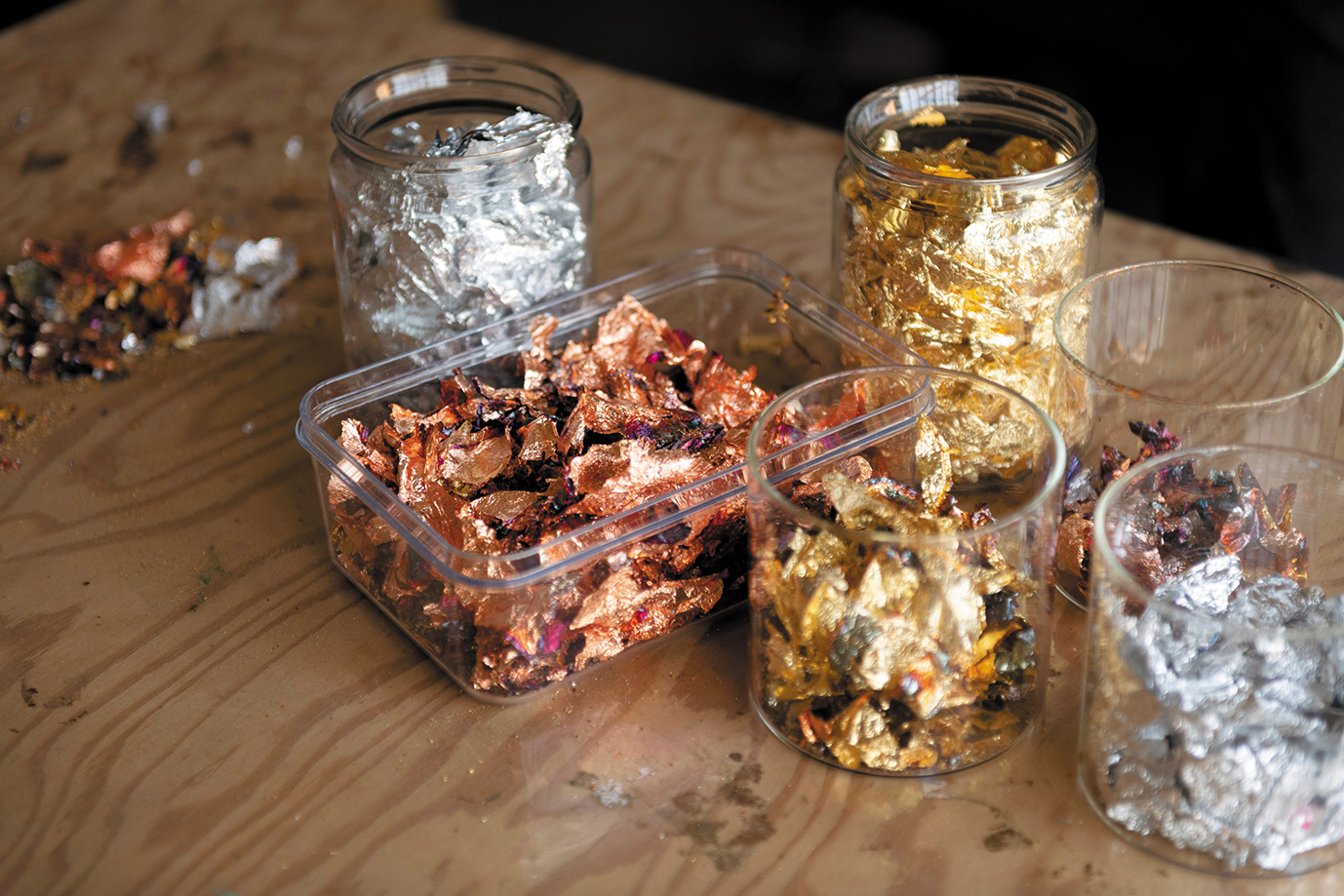
After mastering traditional Japanese and French techniques, Saito went through a long process of trial and error using Ozu Washi to develop his technique of Gilding Washi. His company submitted pieces to numerous exhibitions, including Paris Maison & Objet, succeeding in making the Ikazaki Shachu name increasingly known both in Japan and abroad.
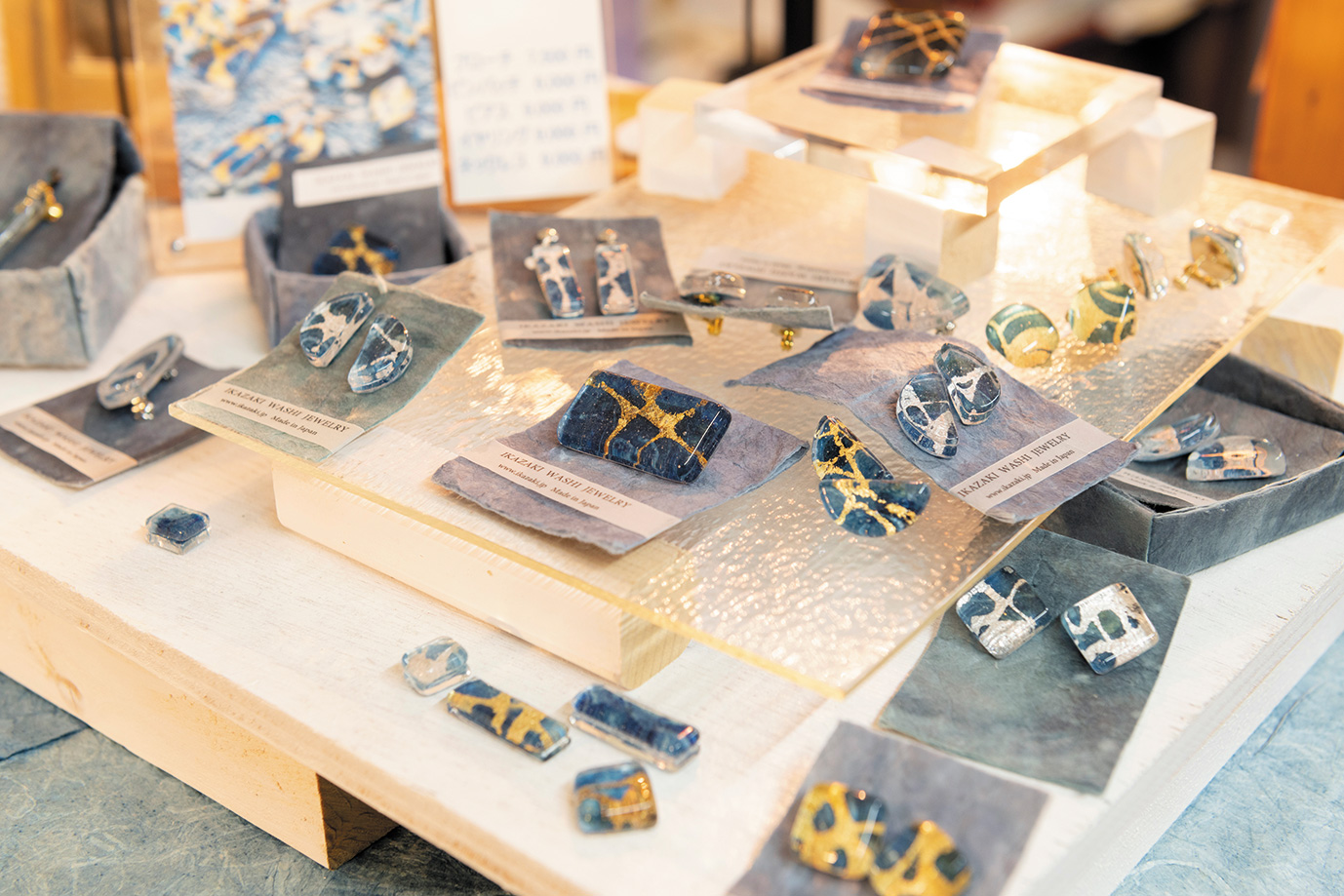
With its exquisite luster and Japanese aesthetics, Ikazaki Shachu Gilding Washi has attracted the attention of firms seeking sophisticated designs. The company has been inundated with requests from around the world for custom-made products, including interior decor materials for high-end brand shop and luxury hotels and for collaborations with world-famous characters. In Japan, the Dogo Onsen Honkan, the main building in the renowned wooden public bathhouse in Ehime, as well as shops in well-known department stores, feature Gilding Washi in their decor.
Saito explains, “As Gabor says, washi is a soft, organic material, while metal leaf is hard and inorganic. The fusion of these contrasting materials into a single piece is perhaps why it is so highly regarded. Gilding Washi offers a rich range of designs, making it a great material for not just wallpaper, but for panels and tapestries, fittings such as sliding doors, and stationery like greeting cards and letter sets, as well.”
The company’s Gilding Washi products are available at an increasing number of museum gift shops and interior goods stores. Gilding Washi adds even more value to traditional handmade washi, reinforcing the appeal of a Japanese tradition that has been in decline and offering greater opportunity to bring washi into modern daily life.
Receiving The MITSUI Golden Takumi Award in 2018, Saito became a leading figure in Ozu Washi. He did not stand still, though, quickly embarking on his next project. After studying creative arts at a contemporary artist's studio, he is now taking new steps to revitalize the community where he now lives through art, working with Yuichiro Ichige, a designer who also moved to Uchiko and promotes the charms of the town. In November 2022, they opened the Tenjinkan art gallery 100 meters from Ikazaki Shachu in a renovated washi warehouse, which had once stood empty.
Ichige explains the gallery's purpose, “If we can use the gallery that Saito has built as a base to create a flow of both creators and visitors, and if we can manage an art business with established exhibitions and art sales, I think that we can build a small local art market. We have two craft sites here, Ikazaki Shachu and Tenjin Sanshi Factory, and we hope it will help revitalize the community with
an open factory workshop element, as well.”
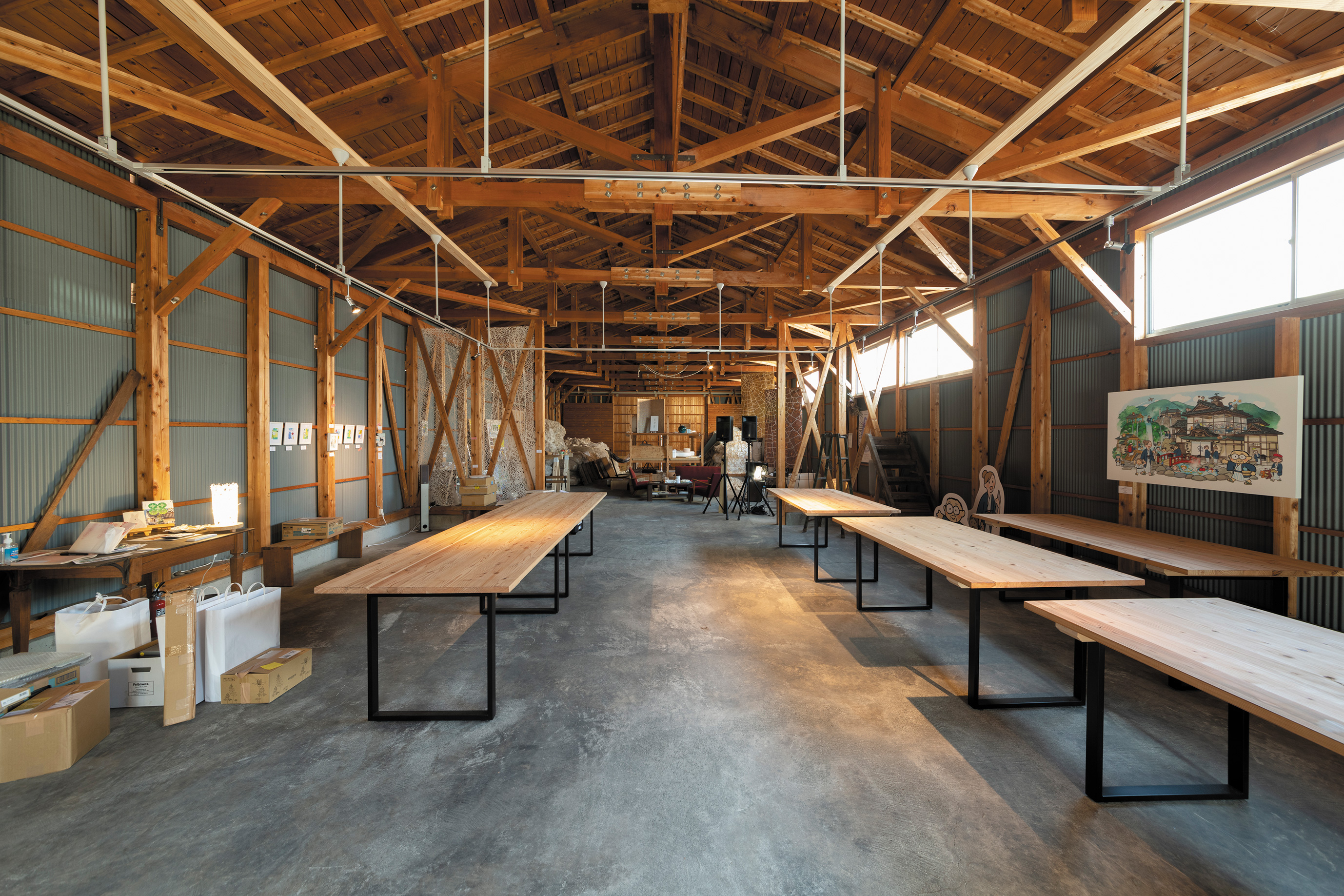
In February 2023, Tenjinkan held an exhibition and sale of art works by young artists participating in the Ichige Onsen online community run by Ichige. The gallery is steadily gaining a reputation as a new art spot, with a screening of Kami no Hitobito (“Paper People”), a documentary about the Tenjin Sanshi Factory directed by local filmmaker Koki Karasudani. “Thankfully, we are booked for exhibitions for the coming year. We hope that young people and visitors to Japan will want to visit the gallery as a place where they can encounter something fun,” says Saito.
An art-based endeavor radiating in all directions to create connections among a diverse range of people, Gilding Washi is only just getting started.
